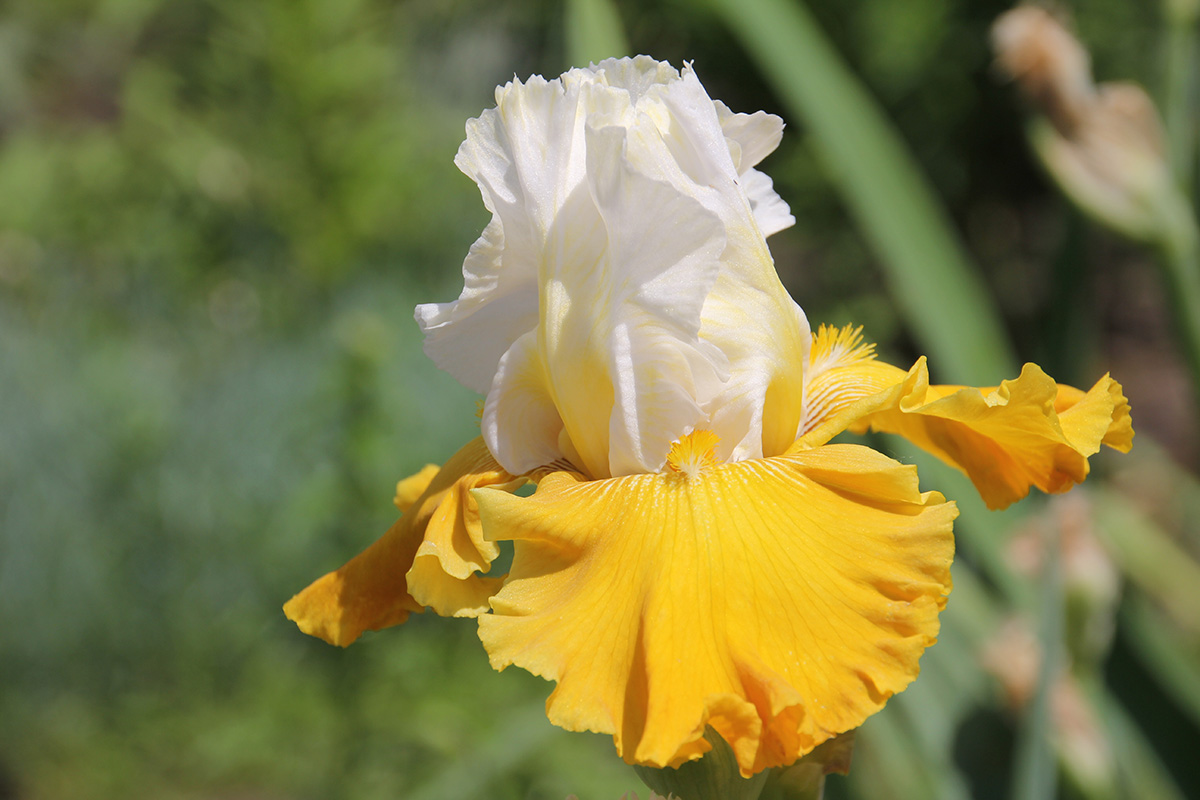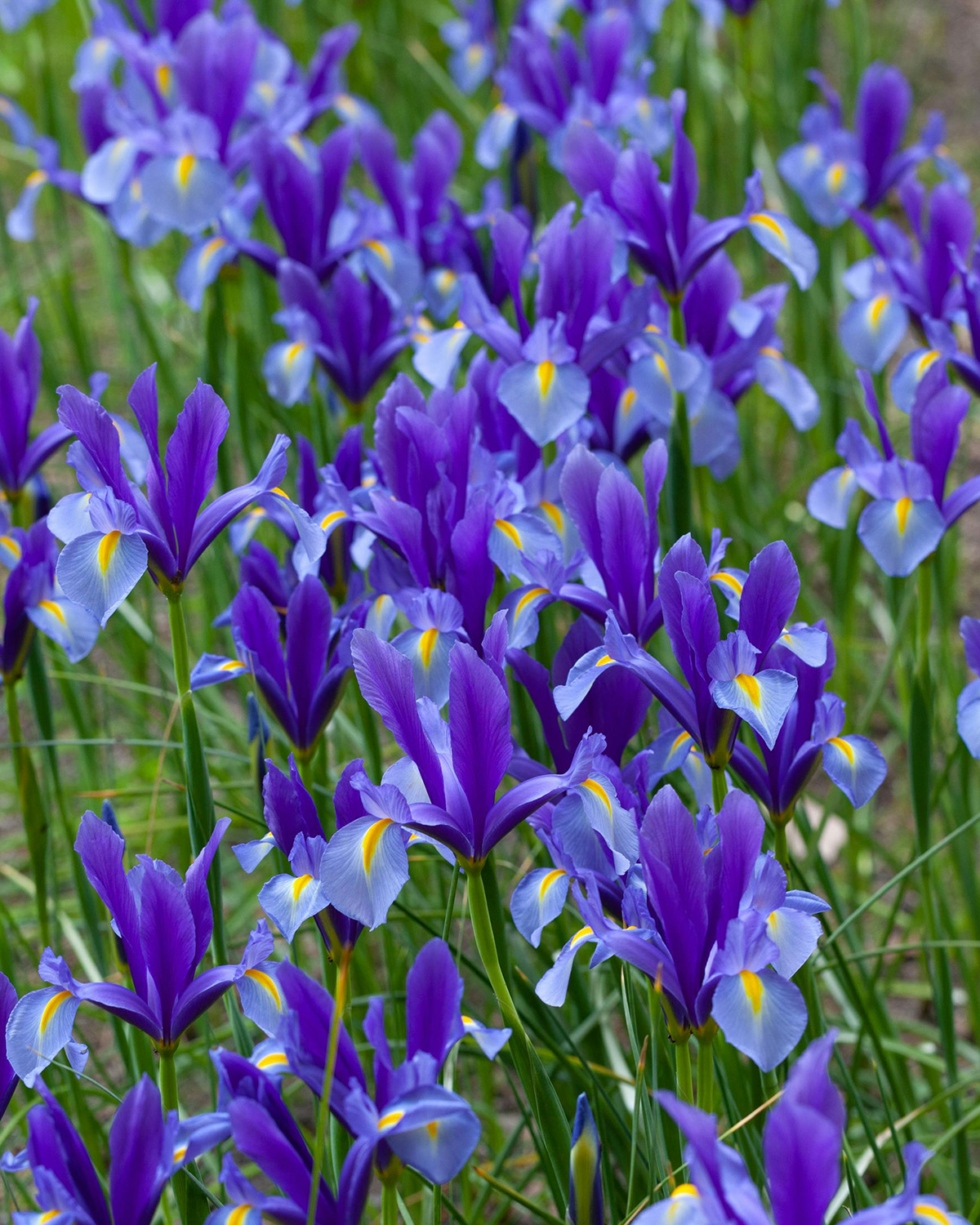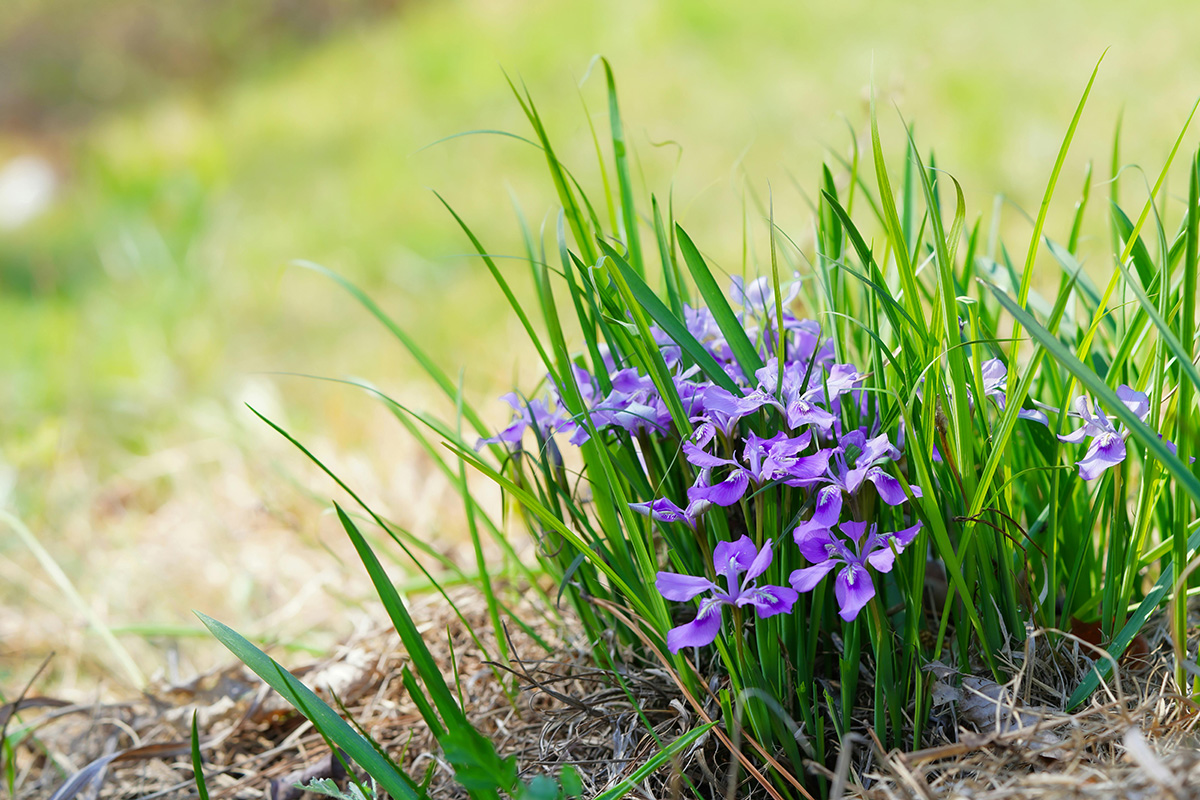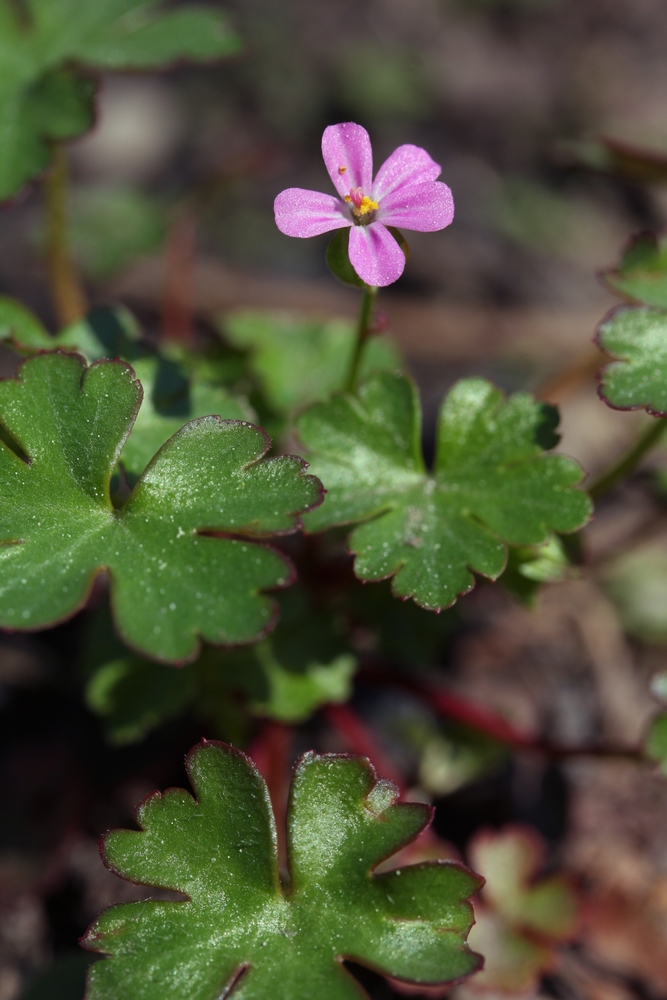European yellow flag iris is known to exist in Saanich but thankfully has not yet been found running amok on Salt Spring Island. Let’s take this as a warning, and do our best to keep this iris out of our waterways. This iris is a striking aquatic plant with vibrant yellow flowers, found on wet edges, straddling terrestrial and aquatic ecosystems. Growing 1-1.5 m tall on smooth green stems, the flowers have brown spots or purple veins on 3 upward-pointing petals and 3 downward-pointing, tongue-shaped “petals”, called sepals. Leaves are flat and sword-shaped, up to 90 cm long and 3 cm wide.
Introduced as an ornamental water plant from Europe, Asia, and Northern Africa, it has spread rapidly in ditches, wetlands, streams, lake shorelines, and shallow ponds. The yellow flag iris reproduces by rhizomes, which sprout anew when broken off, and floating seeds. Its roots form thick mats that can reduce water flow and crowd out native vegetation, damaging wildlife habitat. Economic impacts result from clogged ditches and irrigation canals, trapped sediments in waterways, compacted soil. As such, it is designated as a Provincial Noxious Weed by the B.C. Weed Control Act, as well as a Regional Containment/Control species by the B.C. Provincial Priority Invasive Species List.
Identifying the invasive iris can be tricky without the bloom. It can be confused with cattail (Typha latifolia) which is round at the base and taller than the yellow flag iris; and bur-reed (Sparganium spp.) whose leaves are thick, spongy, and narrower than the iris’ leaves. It is typically the only yellow iris found in wetlands.
Removal
To kill or remove European yellow flag iris, cut the leaves to the base in spring, and lay heavy rubber matting as a benthic barrier to smother the plants. The barrier forces the plants to respire without photosynthesis, exhausting the plant’s energy reserves. At minimum, 70 days is needed for effective eradication. Don’t use mechanical treatment, as any fragments will re-sprout. Once plants are removed, tarp and bag all plant parts and seeds, before transporting to a designated disposal site (e.g.landfill or transfer station). Do not leave rhizomes on site to decompose. Do not compost! Flowers can still form viable seeds. Burning and composting is not recommended as extreme temperatures are required and rhizomes can continue to grow after removal.
Caution: all plant parts can cause skin irritation. Ensure gloves, safety glasses, and long-sleeved clothes are worn during any work with this plant.
Plant these instead
Yellow Bearded Iris (Iris germanica)

Yellow bearded iris is a nice garden alternative, comparable in appearance to the yellow flag, but less tolerant of having wet “toes”. The yellow bearded iris is originally from a drier Mediterranean climate and does not grow in wetlands.
The next two alternatives are smaller irises, native to Oregon and California. They’re typically found in drier habitat and are distinct enough to have their own grouping called grass irises. You may be familiar with Blue-eyed Grass (Sisyrinchium idahoense), which is found locally, and has similar grass-like leaves; it belongs to both the iris and grass iris groups.
Oregon Iris / Toughleaf iris (Iris tenax)
Oregon, or Toughleaf iris is a short, stout iris with a slow-spreading clumping habit, with lavender to dark purple flowers, reaching a maximum height of 40 cm. It has a grass-like flower with narrow, light green leaves. Preferring full sun to light shade, with moist to dry and well-drained soils – and no wet feet! Once established, it becomes drought tolerant. In nature, it grows in open, sunny places (pastures, meadows, oak forest, and logged lands) from northern California to southwestern Washington. With blooms in mid-spring to early summer, these plants are ideal in rockeries, gravel paths, the front of borders, and in woodland borders. Deer and rabbit resistant, toxic to pets. Wear gloves when handling.

Douglas iris (Iris douglasiana)

Douglas iris is a slow spreading, rhizomatous evergreen perennial with a clumping habit, growing 30-60 cm tall. The leaves are broad, sword-shaped, arching, and dark green. Spring blooms of blue flowers, 7-8 cm across. Grows well in heavy soils mixed with organics and some moisture, as it is not drought-tolerant. Sunny open beds and meadows are their preferred places, and they add colour to partly-shaded garden corners. Native to southern California coast into Oregon. Ideal in rock gardens, or woodland edges. Deer resistant. Wear gloves when handling.
Blue flag iris (Iris versicolor)
Blue flag iris is a beloved iris to me, I have a big soft spot for this wetland edge plant, with its feet in both water and land. Found across most of Canada’s wetlands, this flower is less common on the western side of the Rockies. It is the North American cousin of the European yellow flag iris.
Blue flag iris is a herbaceous perennial popular for its pale violet-blue flowers with yellow centres. It grows 30-90 cm tall with grassy green foliage. Blue flag iris is a good choice for wet and moist garden sites as it thrives in acidic, boggy soils. Native to eastern North America.

Other Alternatives
- Siberian Iris





Leave a Reply